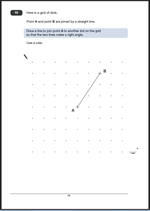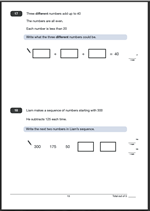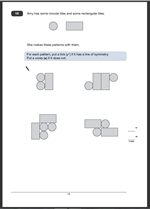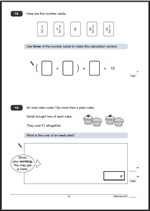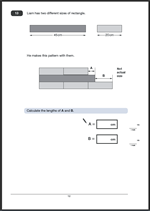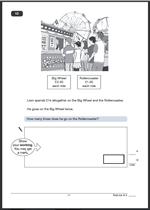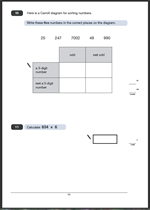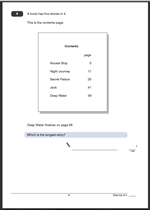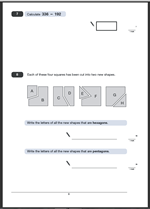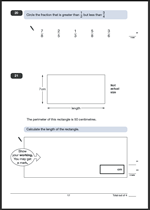 We roll on with the next two questions taken from the Paper A 2010 SATs. These two questions involve fractions and perimeter.
We roll on with the next two questions taken from the Paper A 2010 SATs. These two questions involve fractions and perimeter.
20. 5/8 One mark for this question.
Unambiguous indications will also be accepted as correct eg a tick next to 5/8.
Suggested method:
The standard recommended way to do this question might be to convert them all so that they all have the same common denominator. In this case it would be quite time consuming and a little further investigative work might prove to be easier.
Firstly the answer has to be greater than a half. For a fraction to be more than a half the top number (numerator) has to be more than half of the bottom number (denominator). Looking at each fraction in turn this counts out 2/5, 1/3 and 3/6 so a faint line can be put through these. That just leaves 7/8 and 5/8.
Now, 3/4 is equivalent to 6/8 (multiply numerator and denominator by 2) so the answer has to be 5/8.
21. 18 cm
2 marks for a correct answer.
If the answer is not correct a mark can be awarded for working out that shows an understanding of the process. (eg 50 ÷ 2 = 25. 25 – 7 = ‘wrong answer’.)
Suggested method:
The perimeter of a shape is made up of the length (twice) and the width (twice). Probably the easiest way to do this question is to divide 50 cm by 2. This will give the total of the length and the width.
50 cm ÷ 2 = 25 cm.
The width is 7 cm so the length must be 25 cm – 7 cm = 18 cm
Another way could be:
to double the width: 7cm x 2 = 14 cm.
Take 14 cm from 50 cm = 36 cm
Divide 36 cm by 2 = 18 cm.
Questions 20 and 21 Maths Paper A 2010
Questions 20 and 21 answers and suggested method
